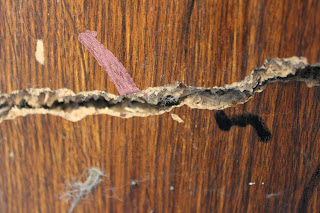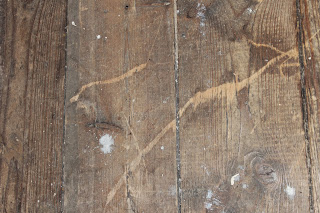Thursday, 28 November 2013
Wednesday, 6 November 2013
COURSEWORK: Observational Photographs
Markings made from wallpaper that was previously there on a wall in my house.
Graffiti on a small building near a restaurant on the A444, Nuneaton.
Graffiti on a door that I found in London, near the River Thames.
Close up of graffiti that I found near The London Eye, London
Olympic-rejecting graffiti in an empty alleyway near the River Thames
Broken wood with markings on it in my garage
Paint marks on my kitchen wall
Paint marks on my kitchen wall
Marks on a door frame in my living room
A crack near my bathroom which has a few marks near it.
A paint mark on the wallpaper in my kitchen.
A face that has been drawn on my bathroom door frame by somebody with a permanent marker.
Worn away paint on some wood.
Black crayon mark.
Mark on my Mum's bedroom door.
Writing on my Mum's bedroom door, which has been painted over.
Marks on my Mum's bedroom door.
Mark on my Mum's bedroom door.
Mark on my Mum's bedroom door.
Pen marks and old drawings in mine and my sister's room from when we were younger.
Pen marks and old drawings in mine and my sister's room from when we were younger.
Pen marks and old drawings in mine and my sister's room from when we were younger.
White paint splat on the wooden door in the living room.
Old wood flooring that is beginning to wear away
Tuesday, 8 October 2013
COURSEWORK: Conculsion
Conclusion
My three artists have influenced me in many ways throughout this
project. I know that I am not going to use all of them throughout the year
however they have made me realise what style of work I want to work in
throughout the rest of my investigation.
Carne Griffiths influenced me because I used a lot of tea and
coffee stain within my work and this is something he does often. I used
Griffiths’ work because of the mark marking that he features in his pieces.
Mark making was something I wanted to explore at the beginning of this project.
Now I want to explore this in more detail as I have learnt more about it over
the past few weeks. Despite all of this, Griffiths’ work doesn't tie into the
type of work that I want to carry on with for the rest of the year, so I won't proceed to use him or his work.
Cy Twombly has influenced my work because I want to continue to
work in the style of him for the rest of this investigation. I think that
Twombly’s work really depicts my theme beautifully as despite his concept not
being specifically being about my theme, his work shows the chaos that comes
with marriage and divorce, while also showing the contrast between love and
hate with the use of his dark and light colours. As I stated before, I am going
to make Twombly my main artist for my investigation because of his relevance to
my work and theme. I also want to work in the style of Twombly so I can work
with similar sizes too.
Linda S Watson and her work hasn’t really influenced me much
because I didn’t really like the style of her work. I think that her work does
show her anger and emotion, however I haven’t felt the exact emotions nor have
gone through what she has. Despite our work both having the same theme, I think
that Watson’s work is too violent and shows too much emotion, and this is something
I don’t want to do too much of in mine. I won’t be continuing to work with
Linda S Watson because in my work I want to show underlying secret emotions.
I worked in the style of all of these artists too. Working in the
style of Carne Griffiths was relatively easy however I had to keep going back
to the piece of work to improve it which is something I don’t want to do
throughout my investigation. Working in the style of Cy Twombly was very exciting
as I had to work on wood which I have never done before. I also had to use a
straw to make paint run which is always very exciting and it made me remember
my childhood as I used to do that when I was younger. Linda S Watson’s work was
hard to work in the style of as I had to layer the materials to create depth,
like she does.
Working in the style of these artists have made me realise that I want
to work on a large scale for the rest of my investigation, just like Cy
Twombly. I would also like to work with the materials and styles that Twombly
uses in his work too such as oil and wood. Over the year I want to stay with
the theme of divorce and I would also like to investigate into marriage as well.
I am also considering researching into my family tree as this may be an
interesting thing to incorporate into my work. I want to begin to use different
colours instead of constantly using white on a dark background as this will
create variation in my project. I would like to experiment with using images in
my work, which is something that Linda S Watson does in her divorce piece. I
think that paint drips over images, possibly of my family etc., will create an
interesting effect.
Sunday, 6 October 2013
COURSEWORK: 3rd Artist Analysis- Linda S Watson
(Image from http://fineartamerica.com/featured/le-divorce-linda-s-watson.html)
This piece of work is created by American artist Linda S Watson and it is named 'Le Divorce'. This piece is about her recent divorce which has been a tough and emotional time. Each piece of work that Watson creates has the concept of emotion and is always one that she has experienced in her lifetime. Watson always uses different materials and mediums in her work but she mainly uses oil on canvas as her base. In this piece of work in particular, she has used images of her home, in which she had to sell when her divorce came through for financial reasons, some of her own blood and steel wool.
This piece is a very angry piece, which you would expect. It is a mesh of red, black, green and purple as well as images of her house and the steel wool, which forms a broken heart shape at the top of the piece.
When I look at this image I feel emotion towards the artist because I can see that she is heartbroken over her divorce. This relates to my project as divorces can be very chaotic etc. She uses light and shade very well in this image as the steel wool creates dark shadows onto the reds and purples on the piece. Watson has used primary and secondary colours in this piece which complement each other. This piece has a three-dimensional form as things such as the steel wool are not flat.
The component parts of the piece, which is primarily the steel wool, leads you in the direction of the piece to start from the top and to work your way around the images of her home and down to the bottom. The red paint and blood also do this to lead you to the bottom of the piece.
Watson quoted that "this (painting) represents the fury I felt at having my dream of 'happily ever after' shattered" which is the meaning behind the piece. She also quoted that 'this painting contains images of my home that I was forced to sell due to my divorce' which is the explanation to the images of her house within the piece.
I am going to work in the style of Watson because I want to portray my anger in a piece of my work which is what she does. The whole concept of this painting ties into the theme of my project therefore it is a good piece to recreate.
Subscribe to:
Comments (Atom)
















































